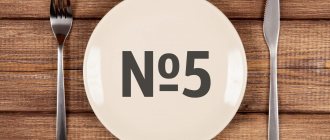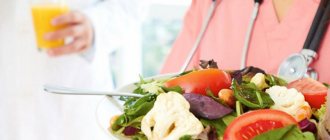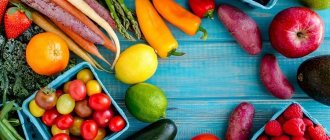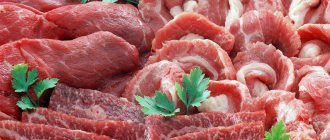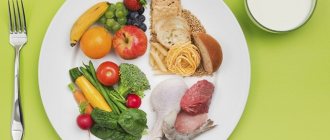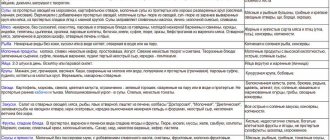“Space diet” by Sergei Sivokho: without denying himself anything, the comedian lost 42 kg in 3 months
Table 5a is a therapeutic diet, which is prescribed during periods of exacerbation of diseases of the biliary tract and liver , sometimes associated with other diseases of the digestive system. Diet 5a is prescribed to ease the work of the affected gallbladder, pancreas or liver.
The menu provided by the diet Table 5a regime protects the liver, biliary organs, stomach, pancreas, intestines and duodenum from the effects of many irritants that provoke fermentation, putrefaction, increase the secretion of bile, gastric juice and elements that can cause damage to the liver.
Strict adherence to the therapeutic Diet Table 5a will reduce the load on the affected organs and speed up the patient’s recovery process.
The Diet 5a menu includes foods that provide a normal daily level of energy value. In comparison with a rational diet, Table 5a reduces the amount of animal fat consumed. The daily level of CBJU eaten should be 2300-2700 Kcal , of which proteins should be 80-100g; fat - 70-80g; carbohydrates - 350-400g. Menu Table 5a allows the intake of sugar. The daily norm for this therapeutic diet is 85g. Salt consumption for lesions of the biliary tract, liver and pancreas is limited to 8g per day. You can drink liquid frequently and a lot in Table 5a mode - up to 2.5 liters per day. The therapeutic nutrition menu of Diet Table 5a is based on fractional meals up to seven times a day.
How I lost half my weight in six months
Food at dietary Table 5a is served pureed or chopped. In case of diseases of the liver, pancreas and gall bladder , fried foods, fatty foods, large amounts of salt, foods containing oxalic acid and cholesterol are excluded . The temperature of the dish with Diet 5a should be average - between +15°C and +45°C.
General rules
Medical nutrition is an important component of general treatment, especially for diseases of the gastrointestinal tract. Dietary Table No. 5A according to Pevzner is prescribed in the acute period of hepatitis , cholecystitis and during exacerbation of chronic forms of these diseases.
It is also recommended for combined pathologies - diseases of the liver, gall bladder, stomach and intestines. The purpose of its purpose is thermal, mechanical, chemical and sparing of all digestive organs. It creates maximum rest for the liver, which is important during an exacerbation, and helps normalize its function and bile ducts.
The basic table for these diseases is Diet No. 5 , and this table is a variation of it. Diets 5 and 5A differ in the degree of mechanical and chemical sparing, methods of preparing dishes and therefore are prescribed during different periods of these diseases - Table No. 5A is more gentle.
The mechanical effect of food products is determined by the degree of grinding, their consistency and volume, as well as the nature of processing (cooking, stewing or frying). The chemical effect is due to the substances included in the products. Strong chemical irritants in food are extractives and essential oils. The minimal thermal effect is caused by dishes whose temperature is close to body temperature. All these points are taken into account in this treatment table.
- Contains steamed and boiled dishes from twisted meat and chopped boiled vegetables; only some dishes are allowed to be baked without a rough crust.
- Sautéing, stewing and frying are excluded.
- 5-6 meals a day are provided, in small portions.
- Fats (refractory) and salt are limited, and proteins and carbohydrates are contained in the physiological norm (90 g and 350 g, respectively).
- Increased content of lipotropic substances (cottage cheese, whey, buttermilk, buckwheat, fiber, polyunsaturated fatty acids). These substances protect the liver from fatty degeneration, reduce the risk of stone formation and reduce the deposition of cholesterol in blood vessels.
- Highly extractive dishes, foods rich in purines and oxalic acid are completely excluded.
- Coarse fiber is not allowed in food.
Inflammatory diseases of the gallbladder are the most common pathology and this diet is most often prescribed for cholecystitis (acute and with exacerbation of chronic). Cholecystitis is infectious in nature, but its development is also caused by stagnation of bile. The disease is characterized by pain, which is pronounced in the acute stage, and the pain can be unbearable. dyspeptic syndrome occurs ( bitterness in the mouth , nausea and vomiting flatulence , diarrhea or constipation may occur .
In the first days of an exacerbation, complete fasting is prescribed to maximize sparing of the gastrointestinal tract. Allowed to drink: weak tea, diluted juices, rosehip infusions. On day 3, the patient is transferred to Table No. 5B , which is indicated for severe pain. The duration of stay is up to 6 days and during this time the patient is on strict bed rest. After 7 days, an extended Diet 5A is indicated, on which the patient remains for 1-2 weeks.
It excludes:
- products that increase fermentation and rotting (legumes, millet, cabbage in any form);
- strong stimulants of bile secretion and gastric secretion (spices, mushrooms, horseradish, pickled vegetables, mustard, salty, fermented foods);
- fiber-rich and sour fruits (citrus fruits, sour plums, cranberries);
- fatty meats, fried, smoked meats, liver, brains, canned food, kidneys, stewed meat, sausages, cream, fatty and sour cottage cheese;
- coffee, cocoa, carbonated drinks.
Mashed potatoes
The same diet is prescribed after removal of the gallbladder or liver surgery, but not immediately. 12 hours after the operation, you can only drink still water (up to 500 ml per day). On the second day, kefir (low-fat), unsweetened tea, and jelly are allowed. All servings are no more than 0.5 cups, taken every 3 hours.
From the fourth day, it is allowed to eat food up to 8 times a day in small portions (150 g each). This can be mashed potatoes (semi-liquid), pureed soups in water, egg white omelet, mashed boiled fish, fruit jelly. Liquids allowed are juices (apple, pumpkin) and tea with sugar. On the fifth day, biscuits and dried wheat bread are introduced. A week after the operation, grated porridge (buckwheat, oatmeal), boiled rolled meat, cottage cheese, fermented milk products and vegetable puree are added. From the third week the patient is transferred to Table No. 5A. For acute hepatitis, this table is prescribed for 2-6 weeks.
For pancreatitis, the same principles of nutrition and restrictions are followed. During an exacerbation, the amount of protein is reduced to 60-80 g, fat to 50-60 g and carbohydrates to 200-250 g, since they stimulate the function of the pancreas. During the recovery period and with chronic pancreatitis, an increased amount of protein is provided, especially in case of exhaustion (up to 120 g), the amount of fat is at the lower limit of normal (70 g) and carbohydrates (350 g), extractive substances (cabbage decoction, meat and fish) are necessarily limited broths) and coarse vegetable fiber. All dishes are served boiled or steamed, chopped. These requirements are better met by Table No. 5P , which has two options (nutrition in the acute period and during mild exacerbation).
Banned foods
Diet No. 5p has many restrictions on food. Foods that are prohibited to eat when treating pancreatitis are the following:
- fatty meat and fish broths;
- any alcohol, as well as strong tea and coffee;
- cold, hot and carbonated drinks;
- smoked products, sausages and frankfurters;
- freshly baked and rye bread;
- fish caviar;
- radishes, turnips, radishes, sorrel and spinach;
- fermented milk products, including yogurt;
- flour products;
- sour and spicy dishes;
- mushrooms in any form;
- salted and pickled dishes;
- dairy products with a lot of fat;
- canned food;
- sweets;
- citrus;
- grape juice;
- fast food, chips, nuts and crackers.
Despite the prohibitions of many foods, diet No. 5p (table) is very effective in the treatment of pancreatitis. What you can and cannot eat - this was discussed above, and then we will talk about the menu for the treatment of pancreatitis.
Authorized Products
Diet Table 5A according to Pevzner includes:
- Soups prepared only in vegetable broths with pureed vegetables. You can prepare puree soups and cream soups, milk soups (milk is diluted with water). You can put cereals in soups (semolina, rice, rolled oats, but boil or puree well). Vegetables are allowed to be chopped very finely (potatoes, carrots, pumpkin, zucchini); they cannot be fried to season soups. Soups are seasoned with sour cream, milk, cream, butter or simply dried flour.
- Wheat bread (grades I and II) is only allowed if it is stale, in order to prevent intestinal bloating. The diet is expanded with the introduction of savory cookies.
- Lean beef, veal, rabbit, chicken. The meat of young animals and birds (veal, chickens) is consumed sparingly due to its high purine content. Meat is recommended boiled and steamed and only chopped products (cutlets, meatballs, meatballs). Boiled chicken can be eaten in pieces.
- Low-fat fish, steamed and boiled, in the form of cutlets and pieces.
- Cereals, of which semolina, rice, buckwheat, oatmeal, and oatmeal are preferable. Porridges are boiled in water with the addition of milk and ground (except for semolina), as a result of which they have a semi-liquid consistency. You can make semolina and rice souffle, as well as porridge from buckwheat and rice flour, which speeds up the cooking process, since there is no need to grind the dish. Thin boiled vermicelli is allowed.
- Low-fat dairy products: kefir, acidophilus, yogurt. Milk is poorly tolerated in the presence of colitis, so it is added only to dishes (omelettes, cereals, sauces, soups). You can eat half-fat cottage cheese in its natural form and as part of casseroles, soufflés, and puddings. Sour cream is used only as a seasoning for dishes. It is allowed to eat mild cheese, but in grated form.
- Omelettes are white only. Yolks are limited to one per day and only in dishes.
- Potatoes, carrots, cauliflower and beets - they are served boiled and grated, as well as in the form of a soufflé. Zucchini and pumpkin can be eaten in boiled pieces.
- You can use sauces based on vegetable broth and mucous broth of cereals with the addition of sour cream and milk. The flour is not fried when preparing them.
- Ripe, sweet and soft fruits, raw, pureed and natural, baked and boiled. You can make boiled fruits and berries, jellies, jelly and mousses. Dried fruits are used pureed.
- Milk jelly, marmalade, sugar, marshmallows, honey, jam.
- Butter is added to dishes in its natural form. Vegetable oil is also allowed in ready-made dishes if tolerated well.
- Drinks: weak tea with lemon and milk, weak coffee with milk, sweet juices, rosehip infusion, still table water.
Table of permitted products
| Proteins, g | Fats, g | Carbohydrates, g | Calories, kcal | |
Vegetables and greens | ||||
| zucchini | 0,6 | 0,3 | 4,6 | 24 |
| broccoli | 3,0 | 0,4 | 5,2 | 28 |
| cauliflower | 2,5 | 0,3 | 5,4 | 30 |
| potato | 2,0 | 0,4 | 18,1 | 80 |
| carrot | 1,3 | 0,1 | 6,9 | 32 |
| pumpkin | 1,3 | 0,3 | 7,7 | 28 |
Fruits | ||||
| bananas | 1,5 | 0,2 | 21,8 | 95 |
| apples | 0,4 | 0,4 | 9,8 | 47 |
Nuts and dried fruits | ||||
| raisin | 2,9 | 0,6 | 66,0 | 264 |
| dried figs | 3,1 | 0,8 | 57,9 | 257 |
| dried apricots | 5,2 | 0,3 | 51,0 | 215 |
| dried apricots | 5,0 | 0,4 | 50,6 | 213 |
| prunes | 2,3 | 0,7 | 57,5 | 231 |
Cereals and porridges | ||||
| buckwheat (kernel) | 12,6 | 3,3 | 62,1 | 313 |
| semolina | 10,3 | 1,0 | 73,3 | 328 |
| oat groats | 12,3 | 6,1 | 59,5 | 342 |
| pearl barley | 9,3 | 1,1 | 73,7 | 320 |
| rice | 6,7 | 0,7 | 78,9 | 344 |
Flour and pasta | ||||
| buckwheat noodles | 14,7 | 0,9 | 70,5 | 348 |
Bakery products | ||||
| wheat bread | 8,1 | 1,0 | 48,8 | 242 |
Confectionery | ||||
| jam | 0,3 | 0,2 | 63,0 | 263 |
| jelly | 2,7 | 0,0 | 17,9 | 79 |
| marshmallows | 0,8 | 0,0 | 78,5 | 304 |
| fruit and berry marmalade | 0,4 | 0,0 | 76,6 | 293 |
| paste | 0,5 | 0,0 | 80,8 | 310 |
| Maria cookies | 8,7 | 8,8 | 70,9 | 400 |
Raw materials and seasonings | ||||
| honey | 0,8 | 0,0 | 81,5 | 329 |
| sugar | 0,0 | 0,0 | 99,7 | 398 |
Dairy | ||||
| kefir 1.5% | 3,3 | 1,5 | 3,6 | 41 |
| curdled milk 1% | 3,0 | 1,0 | 4,1 | 40 |
| acidophilus 1% | 3,0 | 1,0 | 4,0 | 40 |
Cheeses and cottage cheese | ||||
| cottage cheese 1% | 16,3 | 1,0 | 1,3 | 79 |
| cottage cheese 1.8% (low-fat) | 18,0 | 1,8 | 3,3 | 101 |
Meat products | ||||
| beef | 18,9 | 19,4 | 0,0 | 187 |
| rabbit | 21,0 | 8,0 | 0,0 | 156 |
Bird | ||||
| boiled chicken breast | 29,8 | 1,8 | 0,5 | 137 |
| boiled chicken drumstick | 27,0 | 5,6 | 0,0 | 158 |
| boiled turkey fillet | 25,0 | 1,0 | — | 130 |
Eggs | ||||
| chicken eggs | 12,7 | 10,9 | 0,7 | 157 |
Fish and seafood | ||||
| flounder | 16,5 | 1,8 | 0,0 | 83 |
| pollock | 15,9 | 0,9 | 0,0 | 72 |
| cod | 17,7 | 0,7 | — | 78 |
| hake | 16,6 | 2,2 | 0,0 | 86 |
Oils and fats | ||||
| butter | 0,5 | 82,5 | 0,8 | 748 |
| sunflower oil | 0,0 | 99,9 | 0,0 | 899 |
Non-alcoholic drinks | ||||
| water | 0,0 | 0,0 | 0,0 | — |
| mineral water | 0,0 | 0,0 | 0,0 | — |
Juices and compotes | ||||
| apricot juice | 0,9 | 0,1 | 9,0 | 38 |
| carrot juice | 1,1 | 0,1 | 6,4 | 28 |
| peach juice | 0,9 | 0,1 | 9,5 | 40 |
| pumpkin juice | 0,0 | 0,0 | 9,0 | 38 |
| rose hip juice | 0,1 | 0,0 | 17,6 | 70 |
| * data is per 100 g of product | ||||
Basic recommendations from doctors
Chronic pancreatitis (diet No. 5p is very effective for this disease) in the acute stage is treated not only with medications, but also with appropriate nutrition. Doctors advise you to take diet No. 5p with all responsibility. Do not indulge in sweets without a doctor’s prescription, as consuming sugar in quantities of more than 60 g can cause an exacerbation of pancreatitis.
It is useful to drink mineral water during therapeutic nutrition. It is best to consume it warm before bed, in small sips. All food must be ground; rough pieces will irritate the internal organs. Parsley and dill are allowed from greens.
Doctors with pancreatitis advise not to disturb the pancreas again and stick to a gentle menu.
Fully or partially limited products
- Fresh bread, pastries, fried pies, cakes, puff pastry, baked goods.
- You should not eat highly extractive dishes (all broths), foods containing oxalic acid (sorrel, spinach) and essential oils (radish, radish, garlic, onion), as they stimulate the secretory activity of the stomach and pancreas. Eating okroshka and cabbage soup is not allowed.
- Vegetables with coarse fiber (radish, turnip, rutabaga, white cabbage), legumes, millet, pasta, crumbly porridge.
- Lump meat, fatty meat and fish (sturgeon, salmon, halibut), goose and duck meat, smoked meats, caviar, salted fish, sausages, canned food, fried and stewed fish are prohibited. Organ meats (liver, kidneys, brains) because they contain a lot of cholesterol.
- Cooking fats and lard (pork, beef and lamb) are excluded.
- You should not eat hard-boiled or soft-boiled eggs, fried, full-fat milk, cream and fatty sour cottage cheese and salty, spicy cheese.
- Hot seasonings and spices: horseradish, herbs, mustard, pepper, ketchup, mayonnaise.
- Black coffee, chocolate, and cocoa are also excluded.
Table of prohibited products
| Proteins, g | Fats, g | Carbohydrates, g | Calories, kcal | |
Vegetables and greens | ||||
| canned vegetables | 1,5 | 0,2 | 5,5 | 30 |
| eggplant | 1,2 | 0,1 | 4,5 | 24 |
| swede | 1,2 | 0,1 | 7,7 | 37 |
| peas | 6,0 | 0,0 | 9,0 | 60 |
| cabbage | 1,8 | 0,1 | 4,7 | 27 |
| bulb onions | 1,4 | 0,0 | 10,4 | 41 |
| chickpeas | 19,0 | 6,0 | 61,0 | 364 |
| cucumbers | 0,8 | 0,1 | 2,8 | 15 |
| salad pepper | 1,3 | 0,0 | 5,3 | 27 |
| parsley | 3,7 | 0,4 | 7,6 | 47 |
| radish | 1,2 | 0,1 | 3,4 | 19 |
| white radish | 1,4 | 0,0 | 4,1 | 21 |
| iceberg lettuce | 0,9 | 0,1 | 1,8 | 14 |
| tomatoes | 0,6 | 0,2 | 4,2 | 20 |
| dill | 2,5 | 0,5 | 6,3 | 38 |
| beans | 7,8 | 0,5 | 21,5 | 123 |
| horseradish | 3,2 | 0,4 | 10,5 | 56 |
| spinach | 2,9 | 0,3 | 2,0 | 22 |
| sorrel | 1,5 | 0,3 | 2,9 | 19 |
Berries | ||||
| grape | 0,6 | 0,2 | 16,8 | 65 |
Mushrooms | ||||
| mushrooms | 3,5 | 2,0 | 2,5 | 30 |
| marinated mushrooms | 2,2 | 0,4 | 0,0 | 20 |
Nuts and dried fruits | ||||
| nuts | 15,0 | 40,0 | 20,0 | 500 |
| seeds | 22,6 | 49,4 | 4,1 | 567 |
Cereals and porridges | ||||
| millet cereal | 11,5 | 3,3 | 69,3 | 348 |
Flour and pasta | ||||
| pasta | 10,4 | 1,1 | 69,7 | 337 |
| dumplings | 11,9 | 12,4 | 29,0 | 275 |
Bakery products | ||||
| buns | 7,9 | 9,4 | 55,5 | 339 |
| Rye bread | 6,6 | 1,2 | 34,2 | 165 |
Confectionery | ||||
| pastry cream | 0,2 | 26,0 | 16,5 | 300 |
| shortbread dough | 6,5 | 21,6 | 49,9 | 403 |
Ice cream | ||||
| ice cream | 3,7 | 6,9 | 22,1 | 189 |
Chocolate | ||||
| chocolate | 5,4 | 35,3 | 56,5 | 544 |
Raw materials and seasonings | ||||
| mustard | 5,7 | 6,4 | 22,0 | 162 |
| mayonnaise | 2,4 | 67,0 | 3,9 | 627 |
Dairy | ||||
| milk 4.5% | 3,1 | 4,5 | 4,7 | 72 |
| cream 35% (fat) | 2,5 | 35,0 | 3,0 | 337 |
| whipped cream | 3,2 | 22,2 | 12,5 | 257 |
| sour cream 30% | 2,4 | 30,0 | 3,1 | 294 |
Cheeses and cottage cheese | ||||
| parmesan cheese | 33,0 | 28,0 | 0,0 | 392 |
Meat products | ||||
| fatty pork | 11,4 | 49,3 | 0,0 | 489 |
| salo | 2,4 | 89,0 | 0,0 | 797 |
| bacon | 23,0 | 45,0 | 0,0 | 500 |
Sausages | ||||
| smoked sausage | 9,9 | 63,2 | 0,3 | 608 |
Bird | ||||
| smoked chicken | 27,5 | 8,2 | 0,0 | 184 |
| duck | 16,5 | 61,2 | 0,0 | 346 |
| smoked duck | 19,0 | 28,4 | 0,0 | 337 |
| goose | 16,1 | 33,3 | 0,0 | 364 |
Fish and seafood | ||||
| smoked fish | 26,8 | 9,9 | 0,0 | 196 |
| black caviar | 28,0 | 9,7 | 0,0 | 203 |
| salmon caviar granular | 32,0 | 15,0 | 0,0 | 263 |
| salmon | 19,8 | 6,3 | 0,0 | 142 |
| canned fish | 17,5 | 2,0 | 0,0 | 88 |
| salmon | 21,6 | 6,0 | — | 140 |
| trout | 19,2 | 2,1 | — | 97 |
Oils and fats | ||||
| animal fat | 0,0 | 99,7 | 0,0 | 897 |
| cooking fat | 0,0 | 99,7 | 0,0 | 897 |
Alcoholic drinks | ||||
| dry red wine | 0,2 | 0,0 | 0,3 | 68 |
| vodka | 0,0 | 0,0 | 0,1 | 235 |
| beer | 0,3 | 0,0 | 4,6 | 42 |
Non-alcoholic drinks | ||||
| soda water | 0,0 | 0,0 | 0,0 | — |
| cola | 0,0 | 0,0 | 10,4 | 42 |
| instant coffee dry | 15,0 | 3,5 | 0,0 | 94 |
| sprite | 0,1 | 0,0 | 7,0 | 29 |
| * data is per 100 g of product | ||||
Contraindications
Compliance with the 5 p diet in any form is strictly contraindicated in case of kidney disease:
- glomerulonephritis;
- pyelonephritis;
- glomerulonephritis;
- any form of renal failure (acute, chronic).
Table 5p will have to be abandoned if hepatitis activates (transformation from chronic to acute).
This is due to the increased load on the organ, which is unable to cope with lost food, especially its protein content.
The presence of constipation due to insufficient fatty acids in the diet or intestinal dysfunction is an indication for stopping the diet.
5p table is prohibited when:
- the presence of intestinal diverticula (pouch-like protrusions of the intestinal wall);
- polyps in the intestines or stomach;
- oncological diseases;
- organic pathologies of the intestine, disorders of the regulation of its work on the part of the nervous system;
- after removal of a significant amount of intestines or stomach.
Diet menu 5a for a week (diet mode)
In order to prevent stagnation of bile in the gallbladder, you need to organize 6 meals a day in small portions (on average 100 g per dish).
Breakfast can consist of 2 dishes (total 200 g) and a drink, lunch - of 3 courses (up to 300 g in total), dinner - of 2 dishes (200-225 g) and a drink. Breakfast, lunch and dinner should contain a protein dish (cottage cheese, meat or fish). For second breakfast and afternoon snack, you can prepare jelly (fruit and milk), baked and fresh fruit, light fruit jellies, mousses and sambuca.
At night, fermented milk drinks are preferred.
Below is an example of a menu for the week.
Monday
| Breakfast |
|
| Lunch |
|
| Dinner |
|
| Afternoon snack |
|
| Dinner |
|
| For the night |
|
Tuesday
| Breakfast |
|
| Lunch |
|
| Dinner |
|
| Afternoon snack |
|
| Dinner |
|
| For the night |
|
Wednesday
| Breakfast |
|
| Lunch |
|
| Dinner |
|
| Afternoon snack |
|
| Dinner |
|
| For the night |
|
Thursday
| Breakfast |
|
| Lunch |
|
| Dinner |
|
| Afternoon snack |
|
| Dinner |
|
| For the night |
|
Friday
| Breakfast |
|
| Lunch |
|
| Dinner |
|
| Afternoon snack |
|
| Dinner |
|
| For the night |
|
Saturday
| Breakfast |
|
| Lunch |
|
| Dinner |
|
| Afternoon snack |
|
| Dinner |
|
| For the night |
|
Sunday
| Breakfast |
|
| Lunch |
|
| Dinner |
|
| Afternoon snack |
|
| Dinner |
|
| For the night |
|
Description of the diet, to whom it is indicated
There are up to 15 varieties of the fifth diet, prescribed for various diseases. All of them were compiled by nutritionist Mikhail Pevzner. Below is a menu for the week with recipes for diet No. 5, which must be used for damaged liver and gall bladder. You can follow dietary recommendations for up to 2 years without harming your health.
General rules:
- Diet 5 is different in that you eat more protein and carbohydrates than fat.
- From the menu for the week, you should completely exclude recipes that contain ingredients that oxidize during frying, or products that increase gastric secretion.
- It is necessary to limit salt intake to a minimum.
- You should not eat foods high in acid, purines and cholesterol.
Daily norm of BZHU in numbers
Norm:
- 400 g of carbohydrates per day.
- The caloric intake norm is 2400-2800 kcal.
- 90 g of fat per day. The third part of them is plant-based.
- The daily intake of fat is 80 g.
Diet 5 (the weekly menu with recipes is presented below) does not guarantee 100% cure of the affected organs of the digestive system. This course of nutrition will only alleviate your health condition and contribute to the recovery process. Diet 5 is always prescribed with medications and physical therapy.
Dish recipes
Here are simple recipes that can be done at home and do not require special preparation. To speed up the cooking process, you can use rice and buckwheat flour, and puree the boiled vegetables in a blender until pureed. The healing table involves the preparation of puree soups and cream soups. These soups are prepared from different vegetables, a mixture of vegetables and cereals. All products are prepared in the same way, the pureed mass is diluted with vegetable broth (in the first case), and the cream soup is diluted with milk or cream, butter is added.
First meal
Puree oatmeal soup with zucchini
Peel and boil the zucchini. Drain the vegetable broth. Boil oatmeal well in a small amount of water. Grate the cereal and zucchini, add the vegetable broth. Bring to a boil, add a little salt and add butter or sour cream to the finished dish.
Cream soup with rice, chicken and carrots
Boiled chicken meat, rice, carrots, water, butter, crackers.
Boil the rice and carrots well and puree. Beat the boiled chicken pulp in a blender. Combine the rice-carrot mixture, vegetable broth and pureed meat, add salt and oil, boil everything together.
Second courses
Buckwheat flour porridge with milk
Buckwheat flour, milk, water, salt, butter.
Pour buckwheat flour into boiling water in a thin stream, stirring constantly to cook the porridge. Bring to the desired (semi-liquid) consistency with boiled milk. Bring to a boil again, add salt. Serve with butter and sugar if desired.
Steamed chicken dumplings
Prepared from raw poultry pulp. The meat is twisted, butter, salt, milk, and beaten egg whites are added. Using tablespoons, form small quenelles and steam for 15 minutes.
Dessert
Blackberry-raspberry jelly
Ripe blackberries and raspberries, sugar, potato starch, water.
Mash blackberries and raspberries, grate and squeeze out the juice. Dilute the starch in a small amount of the resulting juice. Pour water over the pulp and boil for 10 minutes. Strain the finished broth, add sugar, boil and gradually pour in the juice and starch. Bring to a boil and add the remaining juice at the end.
Curd soufflé
Grind cottage cheese, milk, sour cream, semolina and yolk are beaten in a mixer. Add beaten egg whites and mix. The curd mass is placed in a mold and steamed.
Indications
The main indication for prescribing dietary table number 5p according to Pevzner is the chronic course of pancreatitis (inflammation of the pancreas) or the period of stabilization of a patient with an acute form of the disease.
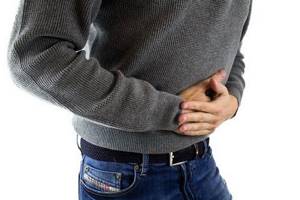
Photo: pixabay.com
Diet helps relieve the following symptoms of the disease:
- stomach ache;
- malaise;
- general weakness;
- cardiopalmus;
- disorders of the gastrointestinal tract.
The first part of the diet is applicable for the treatment of convalescent patients, patients with a tendency to transition from acute pancreatitis to chronic. The second part is used in the treatment of patients with chronic disease.
Reviews and results
Compliance with a therapeutic diet is necessary in the treatment of diseases of the gastrointestinal tract. If strictly followed, the exacerbation is quickly eliminated. Diet 5A also allows you to improve your general condition and reduce weight. Reviews from patients confirm this. It is relatively easy to carry, but many note some difficulties in cooking - steaming dishes and grinding require additional time.
- “... I was treated in a hospital for acute cholecystitis and cholangitis - they thought there were stones, but everything turned out okay. There was purulent cholecystitis. After discharge I continue to follow the diet, they said up to 3 weeks. I feel good, most importantly, the pain, bitterness, and bloating have disappeared. I admit that it is difficult for me to do it, because I am already tired of ground food. It’s not familiar to a healthy person and I have to cook for myself separately, and when I go back to work there will be even more problems”;
- “... After viral hepatitis, she was prescribed for 1.5 months (she was in a serious condition and had bad tests). They were scared that it could turn into a chronic form, so you need to strictly monitor your diet and it is better to keep the basic liver diet for a whole year, but at least it is easier (almost all foods can and do not need to be ground). And now there is nothing to worry about and the tests have returned to normal. I can say that it is problematic to prepare dishes - I run around with a double boiler and beat everything in a blender. We're a little tired of puree soups, we're not used to them. I had to buy a multicooker - it helps a lot. When I switch to a more extensive diet, I will teach the whole family to eat properly”;
- “... I have chronic cholecystitis, gastritis and colitis. With such a bouquet, during an exacerbation I am in the hospital for 2 weeks and it is there that I receive this table, and some steam and cottage cheese dishes are brought from home. After discharge, I try to follow this therapeutic diet for another two weeks, and then I switch to the main diet - then it will be easier. It goes without saying that dietary nutrition is necessary for such diseases. After 10 days, relief is felt: there is no heaviness in the stomach and under the rib, bitterness and pain in the intestines disappear. In general, I eat healthy, I cook everything in a steamer, and my family supports me. I prepare the same soups for everyone (without fat and frying), and then I blend them a little in a blender. I’ve already adapted.”
Principles of dietary table No. 5p
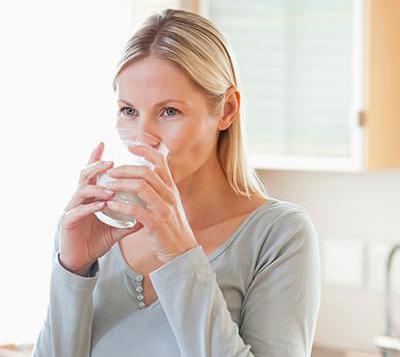
Diet No. 5p is intended to stabilize the functioning of the pancreas. It spares the stomach and intestines as much as possible, relieves pain, and reduces the reflex excitability of the bile organ. When observing this, the following principles must be adhered to:
- before the diet you need to fast for 3 to 7 days;
- the eating regimen should be fractional, 5-6 times a day;
- you need to eat in small portions, up to 300 g;
- dishes should be steamed, boiled or baked;
- a balanced diet should be introduced that will contain all the vitamins and minerals the body needs;
- all food should be semi-liquid and ground;
- temperature regime of ready-to-eat dishes is 20-25 °C;
- the consumption of fats and carbohydrates is reduced to a minimum.
For therapy to be effective, all rules of therapeutic nutrition must be followed. You should not break the prohibitions until complete remission or recovery occurs.
Meat pate
Ingredients:
- chicken breast (rabbit, turkey) – 700 grams;
- butter 40 g;
- oregano;
- greenery;
- nutmeg
- mild, lightly salted cheese.
Preparation:
Boil the breast. Melt the butter. Place all products in a blender and mix.
The pate is ready. It should be consumed little by little. No more than a tablespoon per day is allowed, since the dish contains a large amount of butter.
Is it possible to fast while sick?
The Great Pre-Easter Lent is approaching. Fasting in church practice is not to go hungry, to cleanse the body, although, without a doubt, the body is cleansed during fasting. Christians use fasting to draw closer to God with their hearts and souls. This is a symbol of the fact that the Holy God is more valuable to the believer than earthly food.
Fasting is practiced both complete - without food and drink, and partial. People who are in poor health decide for themselves what to sacrifice for God during Lent
The Lord cares about our attitude towards Him, not traditions. It is not for nothing that the Holy Scripture says in 1 Corinthians, chapter 13, verse 3:
“...and if I give away my goods and give my body to be burned, but do not have love, it profits me nothing.”
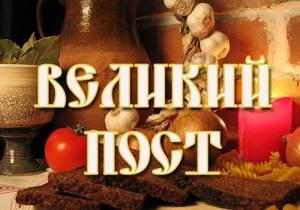
In prayer and fasting, a person comes to know his Creator and His will more closely. God doesn't need our hunger. If a person feels unwell with fast fasting and his health deteriorates, then it would be better to give spiritual sacrifices to God:
- leave quarrels;
- forgive offenders;
- help those in need;
- read Scripture;
- pray;
- give up entertainment programs, communication on social networks, and watching movies.
If a sick person has a desire to fast, you need to consult with your doctor and discuss your diet with him. God doesn’t need a person to get sick or go to the hospital, He wants people to be healthy. Therefore, you should not be fanatical, you should not tempt the Lord with a careless attitude towards your body. The important thing is not to fill your stomach, but to fill your soul with God’s grace.
Oatmeal
Ingredients:
- oatmeal;
- milk;
- sugar;
- salt.
Preparation:
Cooking is as simple as twice two. You need to take a glass of milk and a third of a glass of oatmeal. Salt, sweeten. Cook until done.
You can add honey, a little cinnamon or jam to the cooked oatmeal. You can eat all this!
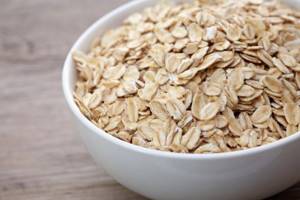
Benefits of green leaf lettuce
Like all other types of greens, this product contains many useful components. They are very important for an organism weakened by disease. Therefore, the menu of every person suffering from pancreatitis must include a green salad. It is recommended to eat it fresh, since only such a product contains a maximum of vitamins.
It is important to consider that green salad contains vitamin C or ascorbic acid that is harmful to the affected organ. To reduce its amount, lettuce leaves can be soaked in boiling water.
Only after such processing can they be consumed.

The diet can be diversified with green leaf salad, but some types of it are prohibited for consumption.
When the disease is in remission, it is permissible to eat fresh salad and add it to various dishes. It is quite acceptable to consume the leaves 1-2 times a week, seasoned with low-fat sour cream or yogurt.
Among the many types of lettuce, there are those that need to be excluded in case of inflammatory damage to the organ. In particular, arugula and watercress are prohibited. These products contain a lot of vitamin C and oxalic acid, which are contraindicated for pancreatitis.

